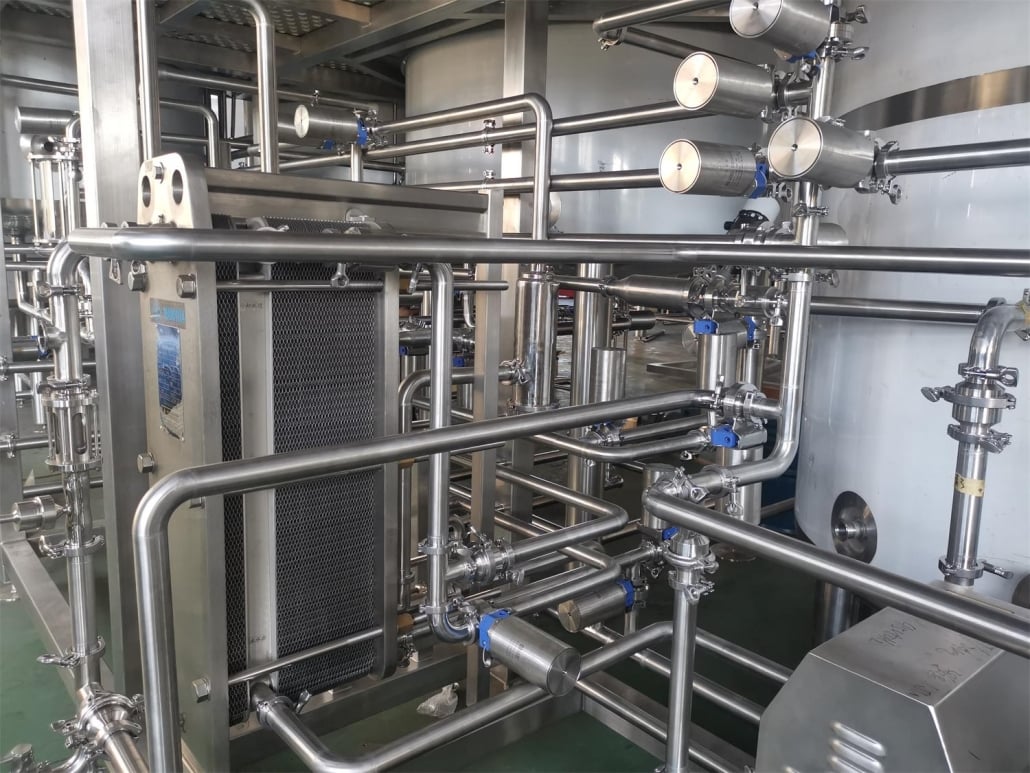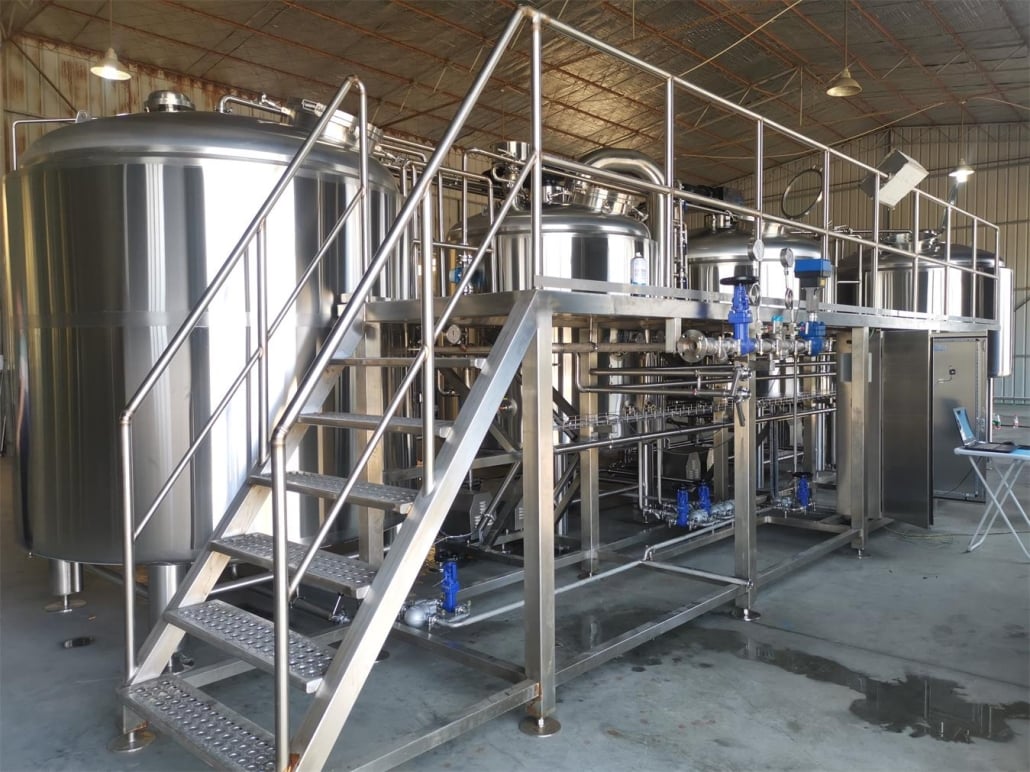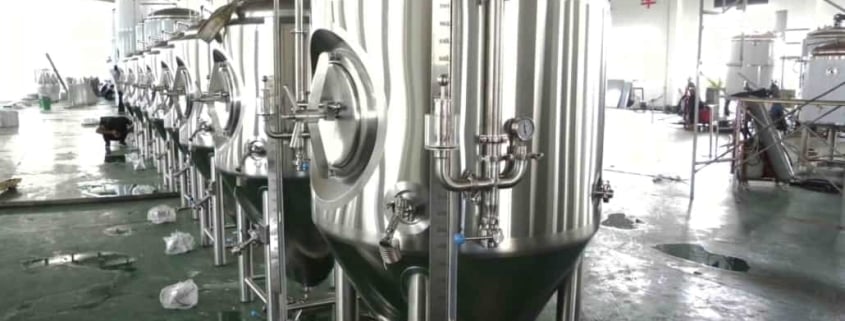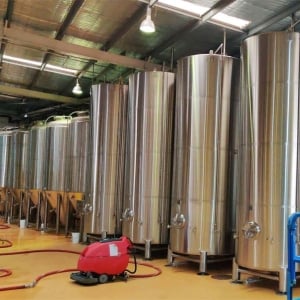45 Gallon Brew Kettle
Homebrewing beer on a larger 45 Gallon Brew Kettle allows serious hobbyists and small producers to make batches efficiently. Choosing the right brew kettle is critical to control mashing, boiling, fermentation and achieve desired flavors. This guide covers key considerations from kettle types, design, customization, installation and suppliers to help select the optimal 45 gallon set-up.
Overview of 45 Gallon Brew Kettles
Homebrew kettles with a 45 gallon capacity enable larger batches for distribution or commercial sale once licensed. Key features buyers evaluate are:
Types – stainless steel, electric vs propane heating
Dimensions – diameter, height and thickness
Features – thermometers, ports, valves, handles, stands
Customization – etchings, fittings, automation
Price Range – from $1500 – $4000
Top Suppliers – Blichmann, Brewer’s Hardware, Colorado Brewing Systems
Matching kettles with burners and the brewing system design is vital. Beyond capacity, prioritize efficiency, durability and ease of handling.

Brew Kettle Types
45 Gallon Brew Kettles are available in stainless steel or aluminum with electric or propane heating.
| Kettle Type | Description |
|---|---|
| Stainless Steel | Long-lasting, stainless steel is ideal for food/brewing use. More expensive but higher quality and easier to maintain/clean. |
| Aluminum | Affordable but less durable option. Can react with wort, requires careful cleaning. |
| Electric | Heated with electric elements, digitally controlled for precision but high energy costs. |
| Propane | Powered by propane burners, adjustable manual control. High BTU output but temperature fluctuations. |
Stainless steel electric kettles are most popular for advanced homebrewers due to consistent mashing and boil temperatures.
Key Brew Kettle Components
Beyond the basic container, additional ports and parts maximize functionality.
Essential Features:
- Thermometer
- Ball valve
- Sight glass
- Reinforced rims
Optional Upgrades:
- Etchings/volume markings
- Multiple ball valves
- Automated elements
- Handles/lifting rings
- Stand/cart
Upgrading to a tiered steam condenser kettle or an automated electric brew-in-a-bag (BIAB) system improves efficiency further.
Dimensions – Size Considerations
With a 45 gallon capacity, key dimensions buyers evaluate are:
| Parameter | Typical Range |
|---|---|
| Diameter | 28″ – 32″ |
| Height | 28″ – 36″ |
| Thickness | 1.2mm – 2mm |
A wider diameter provides a larger surface area for boiling and evaporation. Greater height allows active fermentation with kräusen foam without overflowing. Thicker metal increases durability and heating efficiency but also price.
Design Aspects
Kettle design focuses on facilitating movement, heating efficiency and cleaning.
| Design Choice | Benefits |
|---|---|
| Flat bottom | Stability on burners/stands, easy cleaning |
| Conical bottom | Smoother liquid flow, transfers solids |
| Stand/legs | Easier mobility, adjustable height |
| Lifting rings | Helps carry, pour heavy volumes |
| Etchings | Volume markings for tracking |
| Sight glass | Visually assess volume/process |
| Spigot | Contained transfers to fermenters |
Conical shaping is better for transferring hot liquids safely. Legs, wheels or carts help rearrange kettles. Volume etchings and sight glasses simplify monitoring.
Customization Options
Beyond standard models, brew kettles can be customized with:
| Customization | Details |
|---|---|
| Etchings | Volumes, manufacturer branding |
| Fittings | Additional ports, valves, handles |
| Automation | Electric controllers, sensors |
| Tri-clad bases | Encapsulated aluminum/steel |
| Interior finishes | Electro or steam polishing |
Custom etchings display volume measurements or company branding. Automated electric kettles allow programming temperature curves accurate to 1°F for perfect mashes. Other options like encapsulated tri-clad bases enhance performance.
45 Gallon Brew Kettle Price Range
With advanced components and larger capacity, 45 gallon brewing kettles range from $1500 to $4000 based on:
| Price Factor | Typical Range |
|---|---|
| Basic stainless model | $1500 – $2000 |
| Electric elements + Control | $2000 – $3000 |
| Conical shaping | $3000 – $4000 |
| Automated BIAB | $3500 – $4000 |
Upgrading from basic stainless hardware to precise sensors and automated programming greatly improves functionality but also increases costs.
Top Brew Kettle Brands/Suppliers
| Brand | Description |
|---|---|
| Blichmann | Premium electric brewing equipment made to order in USA |
| Colorado Brewing Systems | Custom fabrication from 5 to 240 gallon systems |
| Spike Brewing | Specialize in electric kettles and all-in-one systems |
| SS Brewtech | Highly configurable stainless steel kettles and accessories |
| Brewer’s Hardware | Wide range of kettles, burners and brew gear |
These leading homebrew brands offer 45 gallon kettles from stock or custom fabricated with a full range of fittings. They also provide guidance on designing entire breweries.
Kettle Installation Considerations
Setting up the 45 gallon brew kettle requires:
Space Planning:
- 5-10 ft clearance around kettle
- Ventilation for boilovers
- Outdoor/dedicated utility sink
Assembly:
- Mount thermometers, sight glasses, valves
- Attach ball valves for transfers
- Add etchings if needed
- Test heating elements if electric
Safety:
- Anchor stands, strap kettles in place
- Install catcher trays for spills
- Have multipurpose foam or extinguisher ready
Testing:
- Break in steel with initial boil and discard
- Compare thermometer temperatures
- Calibrate electric controllers if needed
- Check valve seals with soak test
Leave room for staging fermenters and moving vessels around the kettle. Secure all fittings before firing up to prevent accidents.
Brewing Process With a 45 Gallon Kettle
The key brewing steps optimized with a 45 gal kettle are:
Mashing – Mixing milled grains with water at 150-160°F to extract sugars, proteins and flavors
Lautering – Separating sweet wort from spent grains before boiling
Boiling – Heating wort vigorously for 1-2 hours, adding hops
Whirlpooling – Creating a vortex to separate trub and hops
Chilling – Rapidly cooling boiled wort to 75-85°F to pitch yeast
Fermenting – Allowing yeast to convert sugars into CO2 and alcohol
Transferring – Moving fermented beer into serving vessels using valves
The kettle is involved from mash through boil and whirlpool stages before transferring to fermenters.
Cleaning and Maintenance
Effective kettle cleaning prevents off flavors and contamination:
| Method | Procedure | Frequency |
|---|---|---|
| Rinsing | Hot water rinse after brewing | Each use |
| PBW Soak | Fill with water + PBW powder soak >20 mins | Weekly |
| Citric Acid | 2% citric acid solution soak if hard water or stainless oxidation | Monthly |
| Re-passivation | Nitric or phosphoric acid soak rebuilds chromium oxide layer | Annually |
| Deep Scrub | Bottle blaster pressure spray staining; non-abrasive brush surface areas not reached by chemicals | Annual deep clean |
PBW and citric acid remove organics; passivation prevents corrosion. Avoid abrasives that damage interior finish. Electric elements and probes require specialized care.
Maintenance checks:
- Inspect sight glass, thermometer clarity
- Ensure valves fully seal, smooth operation
- Check hoses, seals for wear; fittings for oxidation
Replace any unclear markings, stickiness or leaks immediately to prevent downstream issues.
Tips for Selecting a 45 Gallon Brew Kettle
Choose a brewing kettle using criteria like:
| Parameter | Evaluation Guidance |
|---|---|
| Type | Stainless steel protection; electric precision |
| Dimensions | Scale to match batch sizes and system |
| Features | More ports and valves enable closed transfers |
| Automation | Controllers for accurate, repeated mashes |
| Brand Reputation | Established manufacturers with testing |
| Configurability | Flexible fittings and customization |
| Budget | Invest upfront in essential features |
| Maintenance | Easy to disassemble valves, open access |
| Durability | Withstand repeated heating and cleaning |
| Safety | Sturdy base; contained transfers |
Finding the right balance of budget and features takes research. Upgrade smartly for efficiency and consistency gains over time rather than buying everything upfront.
Comparing Stainless vs Aluminum Brew Kettles
Stainless steel and aluminum are both used to fabricate kettles, with pros and cons:
| Parameter | Stainless Steel | Aluminum |
|---|---|---|
| Durability | Highly durable material, lasts for years | Prone to dents, wear unless thick gauges used |
| Taste Impact | No metal leaching or oxidation | Can infuse metallic tastes without special linings |
| Cleaning | Easy, retains polished shine | Dark stains build up over time |
| Cost | More expensive, especially for electric models | Significant cost savings for basic kettles |
| Weight | Heavier, often thick gauges used | Lighter weight for the capacity |
| Customization | Full range of fittings, valves available | Generally lesser upgrade options |
Stainless steel kettles resist corrosion and provide years of peak performance. But aluminum offers an affordable starting point before investing in stainless pro models long term.

Electric vs Propane Brew Kettles
Both propane burners and electric elements can rapidly heat brew kettles.
| Consideration | Electric Kettles | Propane Burners |
|---|---|---|
| Temperature Control | ± 1° precision with digital controllers | Manual adjustment on burners |
| Consistency | Set automated temperature ramps and holds | Variability batch to batch |
| Efficiency | Faster heating uses less energy overall | High BTU output but greater heat loss |
| Safety | No open flames, lower risk | Higher diligence needed around gas |
| Convenience | Program and walk away | Actively monitor temperatures |
| Cost | More expensive elements and electronics | Lower hardware cost |
| Cleaning | Delicate sensors and heating coils | More forgiving with sprays |
Propane setups provide great power at lower equipment cost but require constant diligence. Electric systems enable perfect control and repeatability for rapid precision brewing.
FAQ
What material should I choose for making a 45 gallon brew kettle?
Stainless steel offers the best durability, beer taste and ease of cleaning long-term. Upgrade from aluminum batches start selling.
What are recommended dimensions for a 45 gallon homebrew kettle?
Most homebrew models range 28-32 inches wide, 28-36 inches tall and 1-2mm thickness depending on gauge. Size to match your batch volumes adding extra space.
Should I customize my 45 gallon brew kettle?
Consider key functional etchings for volumes, additional ports/valves to simplify transfers, lifting rings for safe handling, stands for height and mobility. Fully automated electric kettles take precision further. Custom branding brings professional pride for commercialization down the road.
How much do 45 gallon brew kettles cost?
$1500 – $2000 buys basic stainless kettles, while $3500+ provides conical shaping or electric automation. Prioritize must-have features first before expensive “nice to have” upgrades.
Where can I purchase reliable 45 gallon brew kettles?
Leading homebrew brands like Blichmann, Spike, SS Brewtech and Colorado Brewing Systems offer premium kettles in this capacity. Brewer’s Hardware stocks more affordable production equipment at scale.
What maintenance does a 45 gallon brew kettle need?
Follow good cleaning procedures using PBW soaks after each use and occasional acid baths to prevent staining. Check sight glasses, gaskets and valves periodically for clouding/wear. Replace fittings proactively to avoid mid-batch issues.













